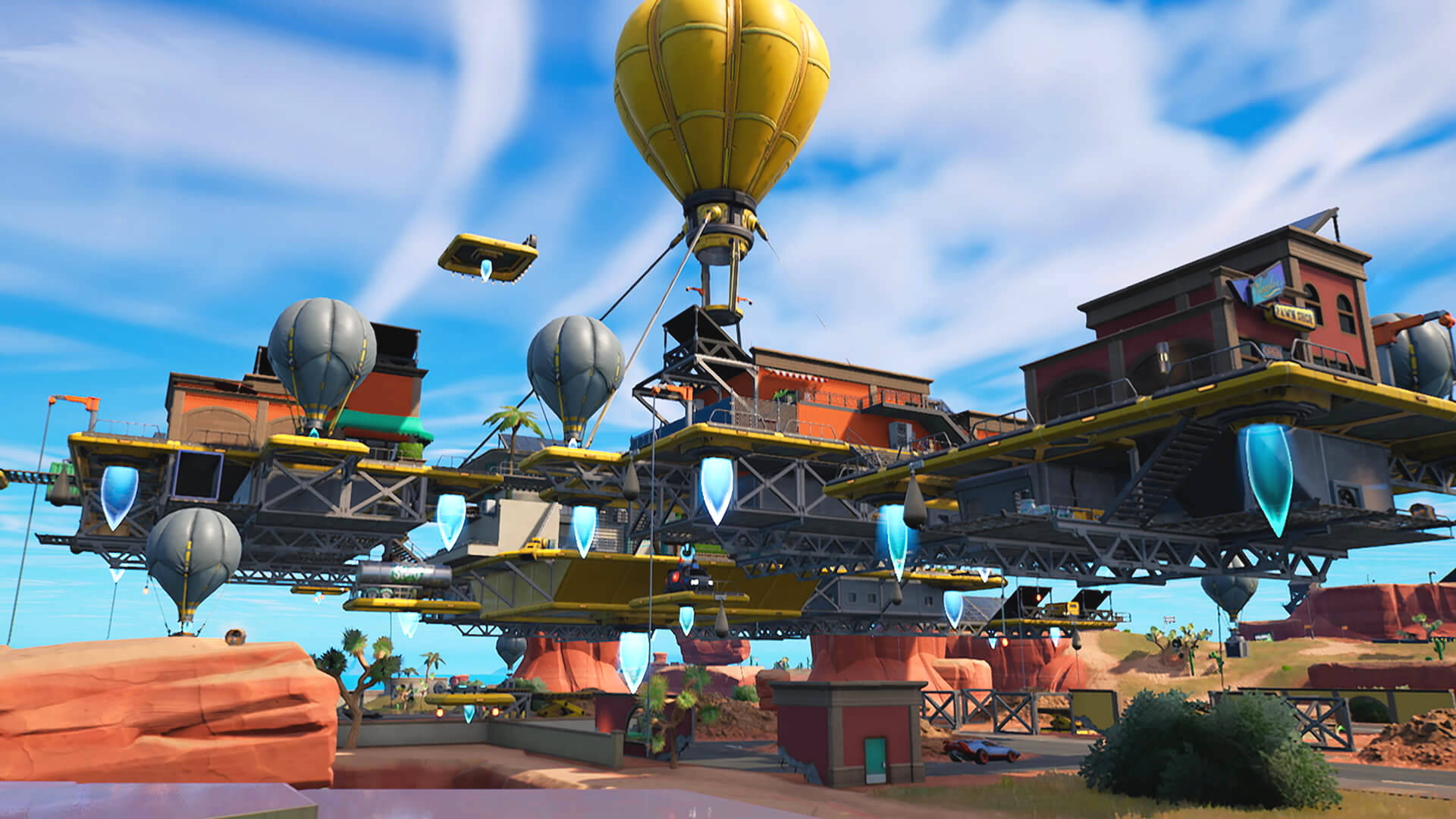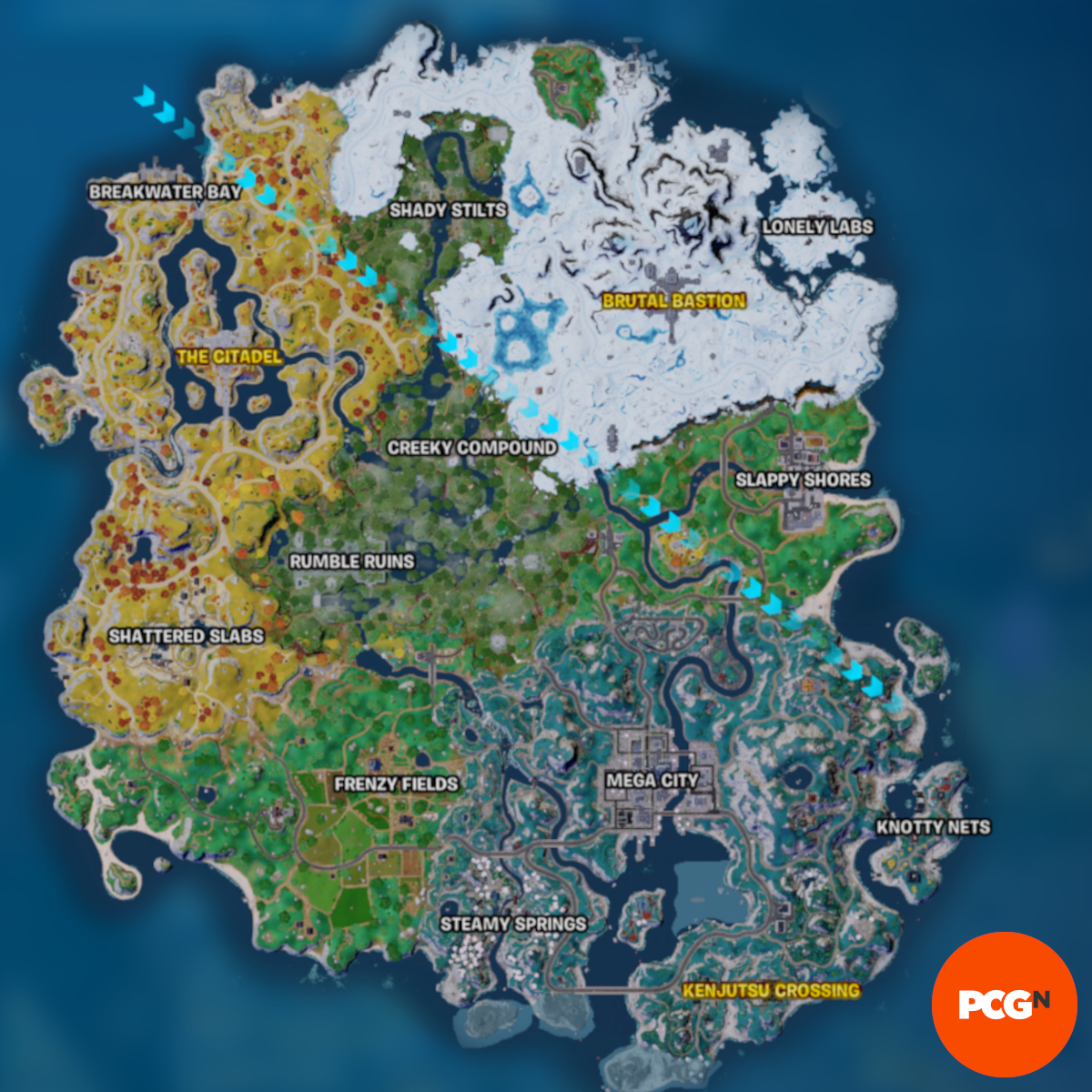Embark on an extraordinary journey through the Chapter 3 Season 3 map, where thrilling adventures await amidst a meticulously crafted landscape. Discover the secrets that lie within this captivating realm, from its enigmatic landmarks to its strategic vantage points.
Step into a world of boundless possibilities, where every corner holds a new discovery. The Chapter 3 Season 3 map is a testament to the game’s ever-evolving narrative, offering players an immersive and unforgettable experience.
Chapter 3 Season 3 Map Overview
/cdn.vox-cdn.com/uploads/chorus_asset/file/23067925/Fortnite_Chapter_3_map.png)
The Chapter 3 Season 3 map in Fortnite Battle Royale, known as “Artemis,” introduces a brand-new island with a diverse range of biomes and landmarks. The map is designed with a unique aesthetic that combines futuristic elements with natural landscapes. It features a large central lake surrounded by various biomes, including a snowy mountain range, a lush forest, a desert, and a bustling city.
The map’s overall layout is designed to promote exploration and strategic gameplay. Key landmarks include the Reality Tree, a massive tree located in the center of the map that serves as a hub for loot and gameplay mechanics. Other notable landmarks include the Greasy Grove, a popular landing spot with a diner and gas station; the Tilted Towers, a high-rise city with plenty of loot and combat opportunities; and the Command Cavern, a secret underground base with a variety of challenges and loot.
The Chapter 3 Season 3 map plays a significant role in the game’s narrative, as it is the setting for the ongoing conflict between the IO and the Resistance. The map’s design and landmarks reflect the ongoing battle, with IO outposts and Resistance hideouts scattered throughout the island. Additionally, the map features various environmental hazards, such as lightning storms and tornadoes, which add an element of unpredictability and challenge to gameplay.
Key Locations and Points of Interest

The Chapter 3 Season 3 map introduces several new and exciting locations to explore. These locations offer unique gameplay experiences and strategic advantages, making them essential for players to know and understand.
Each location has its own history, significance, and notable features. Some locations are important for their resources, while others are strategic chokepoints or defensive positions. Understanding the importance of these locations can give players a significant advantage in the game.
Tilted Towers
Tilted Towers is a fan-favorite location that has been featured in every season of Fortnite. It is a large city located in the center of the map. Tilted Towers is known for its intense combat and high-loot density.
The city is divided into several different districts, each with its own unique features. The Downtown district is home to the tallest buildings in the city, while the Residential district is made up of smaller houses and apartments. Tilted Towers is also home to several landmarks, including the Clock Tower and the Water Tower.
Coney Crossroads
Coney Crossroads is a new location added in Chapter 3 Season 3. It is a small town located on the coast of the island. Coney Crossroads is known for its carnival-themed attractions, including a roller coaster and a Ferris wheel.
The town is also home to several shops and restaurants. Coney Crossroads is a popular location for players to land, as it offers a variety of loot and resources.
Command Cavern
Command Cavern is a new location added in Chapter 3 Season 3. It is a large underground base located in the mountains. Command Cavern is home to the IO, a faction of soldiers who are fighting against the Seven.
The base is heavily fortified and features a variety of different rooms and tunnels. Command Cavern is a strategic location, as it allows the IO to control access to the mountains.
Map Analysis and Exploration Strategies

The Chapter 3 Season 3 map presents a diverse and intricate landscape, inviting players to devise strategic approaches for exploration and navigation. Understanding the map’s layout and design can significantly enhance your gameplay experience and increase your chances of discovering its hidden secrets.
The map features a central island surrounded by smaller islands and waterways. The island’s terrain varies from lush forests to arid deserts, offering a wide range of environments to explore. Key locations, such as the Reality Tree and Tilted Towers, are strategically placed to facilitate both conflict and collaboration among players.
Routes and Paths
The map provides multiple routes and paths for players to traverse. The central island can be accessed via bridges, zip lines, or boats, allowing for quick movement between different areas. The smaller islands offer unique challenges and opportunities, with their own distinct loot and strategic advantages.
Choosing the optimal route depends on your playstyle and objectives. If you prefer fast-paced action, opt for routes that lead directly to populated areas. If you prefer a more stealthy approach, explore the outskirts of the map and utilize the natural cover provided by forests and hills.
Tips for Effective Exploration, Chapter 3 season 3 map
- Utilize the map: Refer to the in-game map to identify key landmarks, loot locations, and potential threats.
- Stay aware of your surroundings: Pay attention to the sounds of gunfire, footsteps, and vehicles to anticipate enemy movement.
- Explore off the beaten path: Venture beyond the main routes to discover hidden chests, weapons, and other valuable resources.
- Collaborate with teammates: Share information about loot locations, enemy sightings, and strategic plans to maximize your team’s efficiency.
Comparison to Previous Maps

The Chapter 3 Season 3 map, known as “Reality Falls,” stands out among its predecessors in several key aspects. Compared to the previous Chapter 3 maps, Reality Falls boasts a more diverse and intricate landscape, with unique biomes and a greater emphasis on verticality.
One of the most notable differences is the presence of the Reality Tree, a towering structure that serves as the map’s centerpiece. The Reality Tree has a significant impact on gameplay, as it periodically spawns Reality Saplings that can be used to loot powerful weapons and items. This feature adds an element of randomness and excitement to the map, encouraging players to explore and adapt to the changing environment.
Another key difference is the introduction of new and revamped locations. Reality Falls features a mix of familiar landmarks from previous seasons, such as Tilted Towers and Shifty Shafts, alongside new areas like Rave Cave and the Greasy Grove Chop Shop. These locations offer unique gameplay experiences and add variety to the map.
Overall, the Chapter 3 Season 3 map represents a significant evolution in Fortnite’s map design. Its diverse biomes, verticality, and dynamic elements provide a fresh and engaging experience for players, showcasing the ongoing innovation and creativity of the game’s developers.
Evolution of Map Design
The evolution of Fortnite’s map design has been marked by a gradual increase in complexity and scale. Earlier maps, such as those in Chapter 1, were relatively small and simple, with a focus on flat terrain and open spaces. As the game has progressed, maps have become larger and more diverse, incorporating verticality, water features, and a wider variety of biomes.
This evolution has been driven by the desire to provide players with a more immersive and engaging experience. Larger maps offer more opportunities for exploration and strategic gameplay, while verticality adds an additional layer of challenge and complexity. The introduction of water features, such as rivers and lakes, has also opened up new possibilities for movement and combat.
The evolution of Fortnite’s map design has had a significant impact on gameplay and player experience. Larger and more complex maps have encouraged players to adopt more strategic approaches, while verticality has added a new dimension to combat and building. The introduction of water features has also created new opportunities for ambushes and surprise attacks.
Final Review

As you delve deeper into the Chapter 3 Season 3 map, you’ll uncover a tapestry of interconnected stories and challenges. Whether you’re a seasoned explorer or a newcomer to the game, this map promises countless hours of captivating gameplay and unforgettable memories.
Embrace the adventure that awaits and forge your own path through this extraordinary landscape. The Chapter 3 Season 3 map is your canvas, and the possibilities are endless.
Helpful Answers: Chapter 3 Season 3 Map
What are the key landmarks on the Chapter 3 Season 3 map?
The Chapter 3 Season 3 map features iconic landmarks such as The Daily Bugle, Coney Crossroads, and Greasy Grove, each with its unique history and significance.
How has the map design evolved in Chapter 3 Season 3?
Chapter 3 Season 3 introduces a more diverse and dynamic landscape, with new biomes, verticality, and interactive elements that enhance the gameplay experience.
What are some effective exploration strategies for the Chapter 3 Season 3 map?
To effectively explore the map, consider following key routes, utilizing vehicles for faster traversal, and paying attention to environmental clues that may lead to hidden areas.





